Techno-Optimist #24
AI can now design whole genomes, Microsoft announces a new quantum chip, Grok 3 and Co., impact risk goes away, autonomous road repair, a possible cure for Down syndrome...and a whole lot more.
Welcome to the twenty-fourth edition of Techno-Optimist, your destination for all the latest updates and commentary on space, science, technology, medicine, energy, AI, and much more. To any new readers since last time, welcome aboard.
It’s crazy how fast things are progressing. Even 20 years ago real breakthroughs—not media hype—seemed relatively few and far between. Now, it’s weekly, sometimes daily, or even multiple times per day. A major goal I have with Techno-Optimist is to keep you all, my readers, up to date with all the biggest and most interesting science, space, and tech news happening. Hopefully that’s something you all enjoy and find useful. If so, please do share. Tell you friends, family, and work collogues. The more people can keep up with the accelerating pace of change, the better.
Alright, let’s dive in.
"May God give us the serenity to accept what cannot be changed, the courage to change what can be, and the mathematics to know the difference. We can just do things. But only if you can do the math."
AI can now design genetic code for all life with Evo 2. The Arc Institute, in collaboration with NVIDIA, has developed Evo 2—the most powerful AI model for biology to date. Trained on over 9.3 trillion DNA nucleotides from 128,000 genomes across all of life, Evo 2 can analyze genetic patterns at an unprecedented scale, identifying disease causing mutations and even designing entire genomes from scratch. It’s “The largest publicly available, AI model for biology to date, capable of understanding and designing genetic code across all three domains of life.” Building on its predecessor, Evo (which focused solely on single-cell organisms), Evo 2 incorporates complex eukaryotic genomes—human, plants, and animals. With its deep understanding of biological code, the model can predict how mutations affect protein function, accelerate disease research, and engineer genetic elements for precise control; including designing gene therapies that activate only in specific cell types.
The Arc Institute team, working with researchers from universities around the country, trained Evo 2 using NVIDIA's DGX Cloud AI platform and 2,000 H100 GPUs. Its architecture, called StripedHyena 2, allows it to process up to 1 million nucleotides at a time—8x more than Evo—helping to optimize Evo 2 for large scale genomic reasoning.
One very practical use of Evo 2’s abilities will be predicting whether a genetic mutation is harmful. In tests with BRCA1 (a gene linked to breast cancer), the model correctly classified over 90% of mutations as benign or pathogenic, without requiring variant specific training. It also goes beyond analysis: Evo 2 can generate entire “simple” bacterial genomes and complete eukaryotic chromosomes, hinting that the possibility of designing fully artificial life isn’t too far down the road.
To ensure responsible use, the developers excluded human infecting pathogens from Evo 2’s training data and implemented safeguards to prevent misuse. The model and its training data are fully open source, allowing researchers worldwide to build on its capabilities.
Evo 2 represents (another) major leap in biology, turning AI into a tool that can read, write, and think in the language of DNA, uncovering “higher-order patterns” that we haven’t yet discovered. Expect to see new applications in medicine, synthetic biology, custom genes for everything from bacteria to crops. I’m sure there will also be uses we haven’t even imagined yet. Here’s one some creative biologist came up with: writing ‘LO’ (the first message ever sent over the internet), and ‘EVO2’ in morse code, in chromatin.
On a related but totally different breakthrough, one day after Evo 2, Microsoft Research casually dropped a new deep learning model called BioEmu-1, able to “generate thousands of protein structures per hour, unlocking new possibilities for protein scientists and drug discovery and research.” It gives a new and dynamic view of how proteins shift and function, and unlike traditional protein simulations, which can take years to model critical structural changes, BioEmu-1 delivers comparable insights at a fraction of the computational cost. It accurately predicts protein folding, stability, and even unseen intermediate structures. Open source as well, BioEmu-1 is a big step towards understanding protein dynamics, also with implications for drug discovery and synthetic biology. (Arc Institute, main announcement) (@arcinstitute) (Patrick Hsu) (NVIDIA) (Microsoft Research) (Samuel Hume)
Microsoft Unveils Majorana 1. Microsoft has just announced Majorana 1, a quantum chip that could be a game changer in the race for large scale, fault tolerant quantum computing. Unlike current approaches that struggle with error rates and scalability, Majorana 1 is built on an entirely new Topological Core architecture. This approach leverages topoconductors—a newly engineered class of superconducting materials capable of harnessing elusive Majorana particles, a type of quantum state that could make qubits inherently more stable and resistant to noise [Sidebar: Majorana particles are exotic quantum states that act as their own antiparticles, making them uniquely stable and ideal for building error resistant qubits in quantum computing].
The long term goal—maybe years away, but not decades—is a million qubit quantum computer capable of solving problems that would take classical computers longer than the age of the universe to compute. Problems including precise and accurate physics simulations of complex systems like molecular interactions, designing new metamaterials, and revolutionizing drug discovery. For decades, quantum computing has been held back by the fragility of qubits. Microsoft’s bet on topological qubits was a very high risk, high reward strategy; one that required the creation of an entirely new state of matter. The Nature paper published alongside the announcement confirms that they’ve succeeded. Not only has Microsoft engineered Majorana particles in a controlled environment, but they've also developed a way to measure them precisely—something previously thought to be nearly impossible.
The company has already placed eight topological qubits on a single chip, with plans to scale up rapidly. Instead of relying on fine tuned analog controls for each qubit (making larger quantum computers unwieldy), Microsoft’s architecture enables digital control, allowing qubits to be turned on and off with simple voltage pulses. This vastly simplifies scaling. Rather than building a quantum computer the size of a football field, Majorana 1 fits in the palm of a hand. Paraphrasing Doc Ock, the power of the quantum in the palm of my hand?
The real promise is a world where quantum computers can design molecules, materials, and entire industrial processes perfectly on the first attempt. Imagine being able to describe a material you need in plain language, and a quantum-AI hybrid system instantly generating the recipe. No trial and error, no years of iterative testing—just answers.
There’s still a lot of work to do, but Microsoft’s announcement moves us years—possibly decades—closer to real world, practical quantum computing. If their approach pays off, it could be one of the most important breakthroughs of the 21st century, as we enter the quantum age. (Microsoft) (Microsoft 2) (Satya Nadella)

AI updates. Buckle up, there’s been a lot happening in a short amount of time.

On February 17th xAI released Grok 3, their new AI model with a goal of seeking truth and understanding the universe. You can check out the whole presentation here. xAI has impressed by going from well behind the cutting edge (Grok 2 was nothing to write home about), to Grok 3 directly competing with—maybe even moving ahead—of current state of the art LLMs. It includes ‘DeepSearch’ and ‘Think’ modes too, competing with the ‘DeepResearch’ and ‘Reason’ options on ChatGPT. (Bill Yuchen Lin) (Data Science Dojo)
Not wanting to miss out on the action, Anthropic launched their newest LLM, Claude 3.7, just one week later. It’s their most intelligent model so far, with two ways to think, allowing “near-instant responses or extended, step-by-step thinking.” The company expects to release a research agent by the end of this year that can do hours of independent work. By 2027 Anthropic expects their research agent to “be able to solve problems that would have occupied scientists for years.” (Anthropic) (@kimmonismus)
OpenAI also added another new model, GPT 4.5, “our largest and best model for chat yet.” Interacting with it feels more natural than previous models, according to the company, making it “useful for tasks like improving writing, programming, and solving practical problems.”(OpenAI) (OpenAI link 2)
Perhaps the biggest news though was Google’s AI Co-scientist, a system built on Gemini 2.0 “designed to go beyond deep research tools to aid scientists in generating novel hypotheses & research strategies.” Built to function as a virtual collaborator, AI Co-Scientist mirrors the scientific method by synthesizing knowledge across disciplines, proposing research directions, and iteratively refining ideas. Its specialized agents generate new hypotheses, then evaluate and improve them, using automated feedback loops to improve scientific reasoning.
Early tests demonstrate its potential: in biomedical research, AI Co-Scientist successfully identified new repurposed drug candidate for acute myeloid leukemia, proposed epigenetic targets for liver fibrosis treatment, and independently hypothesized bacterial gene transfer mechanisms related to antimicrobial resistance—later confirmed by experimental data. That last one was a problem that scientists had been working on for years, Co-Scientist came to the same conclusion in 48 hours. So yes, we just reached and passed the point where AI can discover new scientific knowledge on its own. Eventually the bottleneck for new discoveries might be the time it takes to physically test them. (Google AI) (Google Research) (Dr Singularity) (BBC)

Black hole flares and slinging stars. NASA’s James Webb Space Telescope has been taking a look at Sagittarius A*, our galaxy’s supermassive black hole. The accretion disk of swirling gas and dust surrounding it is “more active than expected, emitting a constant but random stream of flares, from faint flickers to bright eruptions.”
[Timelapse video showing flickers and flares from Sagittarius A*, the Milky Way’s central supermassive black hole, as observed by the James Webb Space Telescope | NASA, ESA, CSA, Farhad Yusef-Zadeh (Northwestern), Howard Bushouse (STScI), Leah Hustak (STScI), Alyssa Pagan (STScI)]
Researchers suspect two distinct processes are at play: smaller bursts may be caused by turbulence compressing disk plasma, akin to solar flares, while larger explosions likely result from magnetic reconnection events, where tangled magnetic fields collide and unleash immense energy. Unexpectedly, the team also observed a slight time delay between different wavelengths of light, providing fresh insights into the dynamics of particles spiraling around the black hole. Future observations aim to extend viewing time, reducing noise and potentially revealing whether these flares follow a hidden pattern or remain truly random.
New research suggests that the Large Magellanic Cloud (LMC) may conceal a supermassive black hole. The evidence? Hypervelocity stars—hurtling through the Milky Way at up to 1,000 km/second (~620 miles/second), far exceeding the speeds of stars within our galaxy. By tracing their paths backward, scientists hope to pinpoint their origin. If enough of these stars can be linked to the LMC, it could indicate that a previously unknown supermassive black hole within our neighboring galaxy, yeeting stars at us. (NASA – Sagittarius A*) (Webb Space Telescope) (Phys.org - LMC)
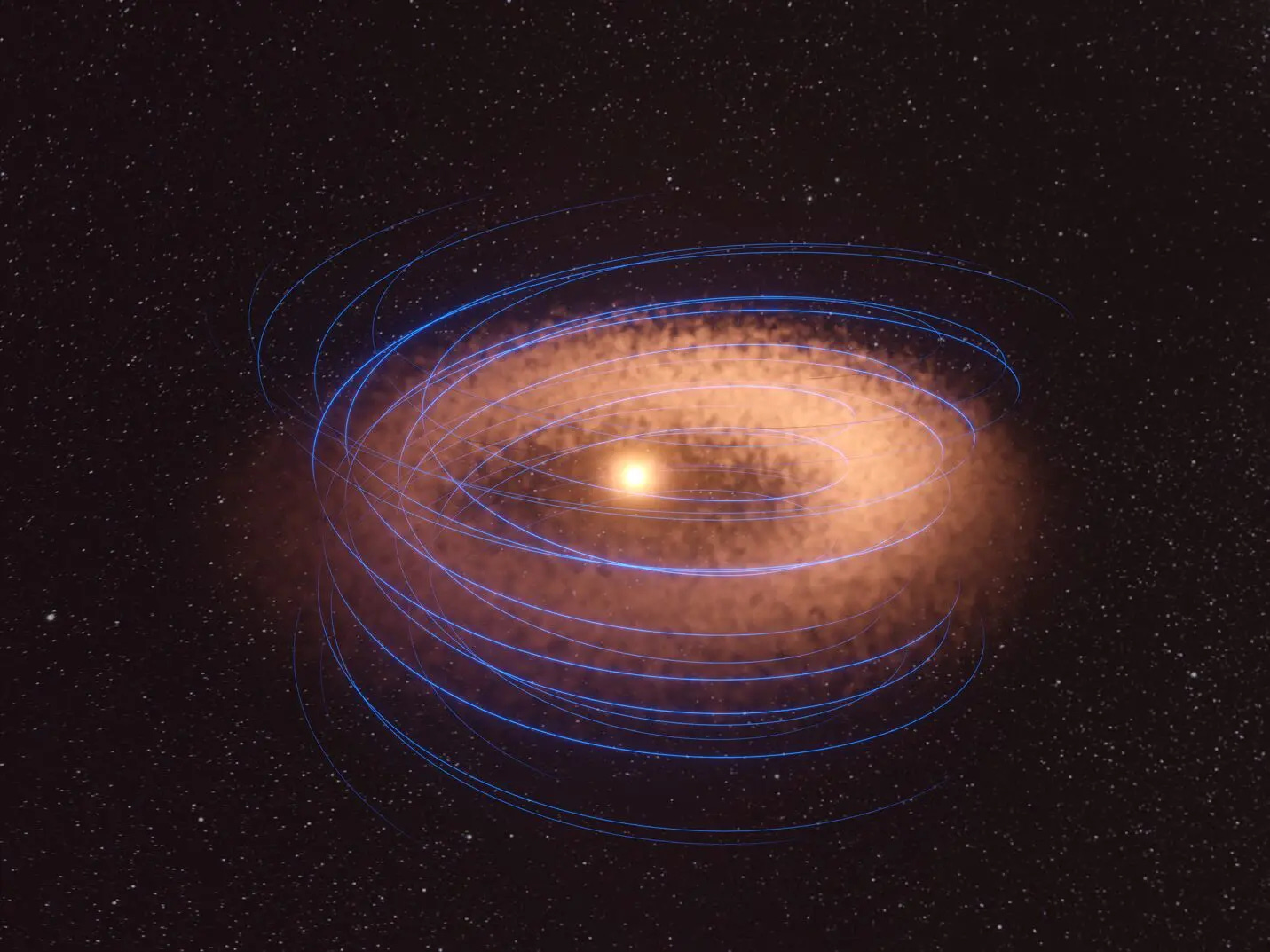
Exoplanet updates. In the Atacama desert in Chile, the ALMA observatory has found a magnetic field in a protoplanetary disk around a young star about 520 light years away. It’s the first time one has ever been observed, and it will be important information for helping researchers understand the role of magnetic fields in planet formation.
370 light years away in the PDS 70 system, two planets are forming. The JWST was able to get a detailed look, letting astronomers see “not just the planets themselves, but the very process of their formation—they’re competing with their star and each other for the gas and dust they need to grow.” Even more interesting, both planets appear to have their own circumplanetary disks of gas and dust, which could form moons.

I mentioned hypervelocity stars earlier. One spotted back in 2011 thanks to a chance microlensing event appears to have a planet along for the ride, according to a new study that found it again in 2021. Astronomers think the most likely scenario is a super-Neptune type world orbiting a low mass star, making this the first planet ever found orbiting a hypervelocity star, and for now the record holder for “speediest planetary system.” (Alma Observatory) (Canadian Space Agency) (Trottier Institute for Research on Exoplanets) (NASA)
Fusion and fission updates. Looks like I’m going to have to stop making fun of Europe for a while. The WEST tokamak in France successfully maintained a fusion plasma for over 22 minutes, beating the previous record held by China’s EAST tokamak by 25%. It’s important that Western nations stay ahead of China on important technologies like fusion, so this is pretty encouraging to see. In other fusion news, American company Helion is “building and operating the first private fusion company tritium processing facility.” They now have over 2 grams of tritium onside, which will allow them to use D-T (deuterium – tritium) fuel in their Polaris machine. Type One Energy just announced a “major step toward fusion energy commercialization,” partnering with the Tennessee Valley Authority to develop Infinity Two, their planned pilot 350MWe fusion power plant. They aim to have it up and running at a former coal power plant site as early as a decade from now. (CEA) (David Kirtley) (Type One Energy)
On the fission side of nuclear news, GE Hitachi is set to move forward on small modular reactors (SMRs) in collaboration with two UK nuclear engineering firms. Commercial operations are hoped to begin by the end of 2029, with four 300 MW units being built. Valar Atomics, an innovative company planning to use nuclear energy to create hydrocarbons, has raised a $19 million seed round. Valar founder Isaiah Taylor said that “You can create diesel, jet fuel, gasoline using hydrogen and CO2, and you get that hydrogen from splitting water using a nuclear reactor. So what this would allow you to do is actually make jet fuel, diesel, gasoline essentially from industrial water and air.” I’m really interested to see what this company does, and being a huge Lord of the Rings fan, I love the name. (Interesting Engineering – GE Hitachi) (Ignition – Valar Atomics) (Valar Atomics)
Humanoid household robots. I know I keep saying it, but we truly are getting closer to that Jetson’s style future. It’s been on its way for a decades, but suddenly the pace of progress has picked up. Before we know it, they’ll be here. Here’s a couple recent announcements that stood out to me.
Figure’s new Helix AI model “reasons like a human” to bring household robots closer to reality, letting them “handle virtually any household item.” They can clean, cook, and organize homes with minimal setup. Helix also enables multi robot collaboration, letting two or more robots work together on complex tasks. Unlike previous systems, Helix runs on a single neural network without task specific fine tuning and can recognize and pick up thousands of unseen objects through natural language prompts. (Figure Robotics – Helix)
A day later, 1X Technologies introduced their NEO Gamma robot, the latest version of its home humanoid robot, designed for “seamless integration into everyday life.” It features a whole-body controller that enables natural walking, arm swings, squatting, and even sitting in chairs, making it more adaptable to real-world household tasks.
On the AI front, NEO Gamma is smarter and more interactive than previous models. A new visual manipulation model allows it to pick up a wide range of household objects, even in unfamiliar environments. A custom built language model enables fluid, natural conversation paired with expressive body language. These upgrades bring NEO closer to the dream of a fully autonomous home assistants—not just follow commands but understanding context, interacting meaningfully, and learning from its environment. (1X) (The Humanoid Hub)
Space
Last time, I told you about a very real impact risk from newly discovered asteroid 2024 YR4, which might hit us in 2032. At that time, the risk of impact was 2.3%, with more observations expected to change that—and change they did. First the numbers climbed all the way up to 3.1% before falling in stepwise fashion down to its current 0.004%, basically zero. As you can see in the GIF above, further observations have narrowed the uncertainty surrounding its orbit, which in this case has essentially eliminated the chance of impact. Interestingly, the chance it hits our Moon is now around 1.7%, which would be pretty cool. My opinion is that this is now the perfect practice asteroid, and that we should still divert it—farther away from us. Perhaps deliberately into the Moon? That would be pretty neat both scientifically and aesthetically. (NASA Planetary Defense) (BBC)
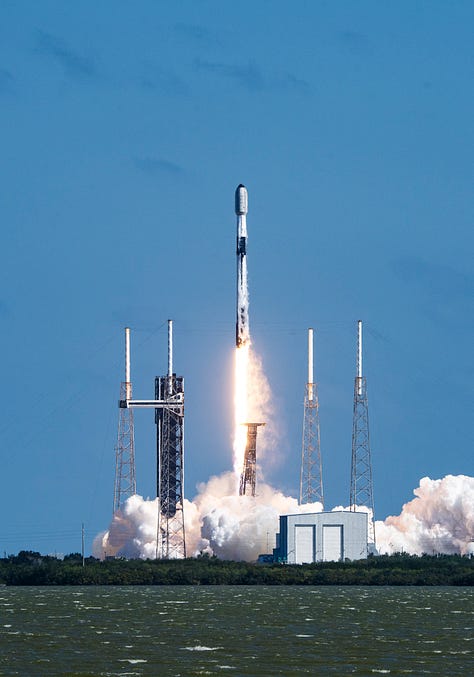
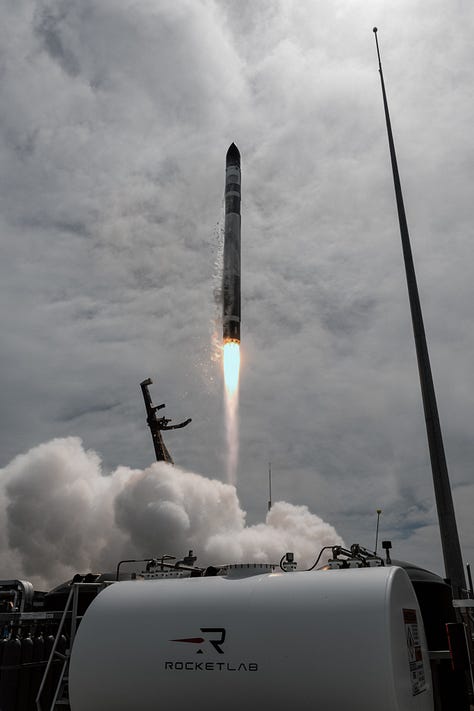
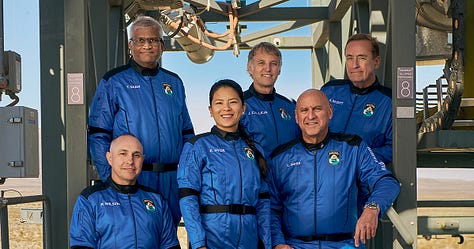
Launch updates: SpaceX’s Falcon rocket completed its 450th mission on February 21st (of course it’s since launched more). Rocket Lab also hit a milestone on Feb 18th, with the 60th launch of it’s Electron rockets. There’s a great compilation of all 60 flights here. Blue Origin successfully completed their 10th human spaceflight—and 30th flight overall—aboard the New Shepard rocket. (SpaceX) (Rocket Lab) (Blue Origin)
You don’t hear much about Russia’s space program these days, but apparently Rosatom—the state corporation specializing in nuclear energy among other things—has built a plasma rocket engine they say could get a spacecraft to Mars in a month or two. Hydrogen fuel would be accelerated to 100 km/second (62 miles/second), far faster than current rocket exhaust. It’s still in early stages of development, but this—or something like it—would be helpful for colonizing the red planet. (Interesting Engineering)
We’ve been measuring gravitational waves for about a decade now, and a new model suggests that some of them could show quantum properties like entanglement. Think of it as being like two wind chimes separated by some large distance, but “swaying in sync because of an invisible breeze,” where the “quantum gravitational waves are like that breeze.” It implies that distant objects in the universe might “sway” together because of the entangled gravitational waves hitting them. More sensitive instruments are needed to test the idea however. (Phys.org)
Extraterrestrial Power, an Australian company, has developed a prototype for space grade solar cells “thin enough to be mass produced like terrestrial solar cells.” It could significantly slash costs, and open the door to making practical space based solar power beamed back to Earth a reality, as well as powering our working and living in space directly. (Interesting Engineering)
An underwater observatory three and a half kilometers beneath the surface of the Mediterranean sea just detected “the most energetic neutrino ever observed,” 30x more than any seen previously. It’s thought to have originated from an object like an AGN (active galactic nuclei, powered by a supermassive black hole), or perhaps a massive supernovae or merging neutron stars. (Corey S. Powell) (Science)
Astronomers may have just observed the formation of a ‘strange star,’ created when neutrons inside a magnetar (an already extreme type of neutron star) break down into their constituent quarks, and “get compressed into an even rarer type of quark called a strange quark—hence the name strange star.” The stars would be rare, and so far only exist theoretically. But a recent gamma ray burst (GRB 240529A) showed three specific “emission episodes” that fit the theoretical expectations for the formation of a strange star. The research is still being validated, but we may have just added a ‘strange’ new stellar animal to the cosmic zoo. (@ExploreCosmos_) (Phys.org)
Look up at the evening sky just after sunset, and you will be able to see 7 of the 9 planets in our Solar System (yes, Pluto is a planet, but it won’t be visible here). Four of them—Mercury, Venus, Jupiter, and Mars—will be easy to see with the naked eye, while for Uranus and Neptune you’ll need some descent binoculars or a telescope. Saturn won’t be visible for long, trailing the setting Sun closely, so maybe pull out a sky map app on your phone to track its location and help you find it. (Starwalk, via Chris Hadfield)
The cost of satellite bandwidth has dropped significantly over the years, from $300 million for a Gigabit/second to merely $40k. With SpaceX’s Starship expected to come into service soon, those numbers could drop another 40-fold to around $1,000/Gbps by 2028. (Human Progress) (Gale Pooley)
Is anyone even surprised now when SpaceX does something new and cool? For the first time ever, a (SpaceX) rocket that launched in one country—the USA—landed in a different one, on a droneship in the Bahamas. (Gail Alfar) (A. Pettit)
AI, Energy, Engineering, & Physics
Boom Supersonic’s XB-1 can fly without a sonic boom, using its “Boomless Cruise” tech, ironic given the name. It enables supersonic flights over land without audible sonic booms—as proven in its January and February 2025 test flights. The innovation leverages Mach cutoff physics, refracting shockwaves away from the ground at speeds up to Mach 1.3, paving the way for the airliner to slash flight times—think New York to LA in four hours instead of over five and a half. This breakthrough challenges outdated FAA rules banning supersonic flight over land, sparking calls for regulatory changes to unleash faster, quieter air travel. (BOOM Supersonic)
Meta’s AI-powered Ray-Ban smart glasses are proving life-changing for the visually impaired. Originally designed as a general-use gadget, they’ve become an essential tool for those who have trouble seeing. Instead of relying on others to read menus, signs, and text, they can now use the glasses to navigate daily life—getting dressed, preparing meals, sorting laundry, and even reading books. As more blind users adopt the device, Meta’s smart glasses are shaping up to be more than just a tech novelty—they’re an invaluable tool to improve quality of life for many. (Human Progress)
New materials: After extensive testing, a material called Composite Metal Foam (CMF) is ready for production. It has the strength of steel but the lightness of aluminum, and is “resistant to ballistic impacts, fire, and radiation.” Applications include body armor, and vehicles of all kinds—including spacecraft. Chinese scientists say they’ve developed a new version of fiber optic cables. They’re far thinner than current versions, but can carry “tens of thousands of times more data than regular single-mode fibers.” (Interesting Engineering—armor) (Interesting Engineering—fiber optics)
China’s game changing leap in supercomputing blows past Nvidia-powered U.S. systems, delivering a nearly 10x performance boost with homegrown graphics processors—or so they claim. A peer-reviewed study published in the Chinese Journal of Hydraulic Engineering showcases Beijing’s relentless push to ditch Western chips, doubling down on self reliance since the U.S. clamped export controls in 2022. This is a win for China, showing that it can compete at high technology, and it’s a sign of China’s master plan to dominate AI. (Interesting Engineering via Dr Singularity)
Elon Musk’s Boring Company has announced it’s going to build the Dubai Loop—a supersonic underground transit system poised to rid Dubai of traffic jams. Announced on February 13, this project launches with a 17 kilometer pilot linking 11 stations, designed to move over 20,000 passengers per hour through the tunnels. This spotlights the alliance with Dubai’s Crown Prince, and signals the UAE’s desire to stay on the cutting edge of new technology. (The Boring Company)
Pave Robotics may have just brought road repair into the 21st century with it’s Tracer robot, which autonomously seals cracks in asphalt “faster and more effectively than a crew of six people” It can operate 24/7, reducing costs, minimizing road closures, and improving efficiency. I’ve got some roads near where I live that could use some Tracer TLC. Seriously. (Y Combinator)
China has approved a deep-sea research station in the South China Sea, set to operate at 6,560 feet (almost 2 km) by 2030. Hosting six scientists for month long missions, it will study methane hydrates and deep sea ecosystems, integrating with submersibles and seabed observatories. The station may connect to the Mengxiang drilling ship, another ambitious project which aims to reach the Earth’s mantle. With an estimated 70 billion tons of methane hydrates, the region holds vast energy potential. Despite robotics advances, China is prioritizing human researchers for versatility and faster discoveries. Other nations have similar plans, but this project could solidify China’s lead in deep-sea exploration. (Interesting Engineering)
Medicine & Biotech
Scientists just used CRISPR-Cas9 to remove the extra chromosome 21 from Down syndrome cell lines, demonstrating a potential path to treating (even curing?) trisomy at the cellular level. The technique selectively eliminates the duplicated chromosome while preserving one from each parent, restoring normal gene expression. While not yet ready for in vivo use, future refinements could pave the way for gene editing based therapies. (Medical Xpress)
A groundbreaking gene therapy has restored sight in four children born with severe blindness caused by a rare AIPL1 gene deficiency. Scientists at UCL and Moorfields Eye Hospital injected healthy copies of the gene into their retinas by means of a harmless virus, dramatically improving their vision. All four children retained sight in the treated eye but lost vision in the untreated one, showing the potential of early intervention. The therapy, reported in The Lancet, could pave the way for future treatments for genetic blindness. (SciTechDaily) (The Lancet)
Mitochondrial stress disrupts insulin production in diabetes, but reversing the damage may restore Beta cell function, according to a Science study by the University of Michigan. Researchers found that mitochondrial dysfunction in pancreatic Beta cells triggers a stress response that prevents insulin production. The same response was seen in liver and fat-storing cells, suggesting a broader impact on diabetes. Blocking this stress response with the drug ISRIB restored Beta cell function in mice, offering a potential path to treating diabetes at its root cause. (SciTechDaily) (Science)
Around 1 in 100,000 babies will be born with spinal muscular atrophy, a deadly genetic disorder. But that will change soon—very much for the better. A young girl received a gene editing treatment for the disease while still in the womb; now two and a half years later she’s completely healthy and shows no sign of it. A medical miracle if ever there was one. (@IterIntellectus) (The New England Journal of Medicine)
Applied to older mice, a drug called ABT-263 boosted collagen production, improved blood vessel growth, and nearly doubled healing speed by eliminating “old, damaged cells known as senescent cells.” Surprisingly, it also triggered a short burst of inflammation that jump-started the repair process. If it works in humans, it could change the treatment for slow healing wounds in aging skin. Another discovery discovered that luteolin, a natural antioxidant found in vegetables like celery and broccoli, may prevent hair from turning gray by preserving key proteins that keep pigment producing cells active. Mice treated with it kept their black fur while untreated ones went gray, suggesting it directly supports hair pigmentation without affecting hair growth cycles. It’s already available as a supplement, and could become part of an anti-aging treatment package. (SciTechDaily – reverse aging in skin) (SciTechDaily – grey hair)
Rice University bioengineers have developed a modular construction kit for designing synthetic “sense-and-respond circuits” in human cells, enabling rapid, programmable cellular responses to physiological signals. The study demonstrates a breakthrough in synthetic biology by harnessing phosphorylation cycles—natural cellular signaling mechanisms—to build tunable, efficient, and customizable circuits. These synthetic pathways could lead to advanced "smart cells" capable of detecting inflammation, tumor markers, or autoimmune triggers and responding in real time. The approach has potential applications in cancer therapy, immunomodulation, and beyond. Nature already has the best nanotech it seems, and step 1 for imitation looks to be modifying it. (SciTechDaily)
Researchers at Georgia Tech have developed a groundbreaking 3D-printed, bioresorbable heart valve designed to fit individual patients and regenerate natural tissue over time. Unlike traditional animal derived replacement valves that degrade and require multiple surgeries—especially for children—this individualized implant gradually dissolves, allowing the body to replace it with its own tissue. The valve can be delivered via a catheter, and assumes its proper shape upon reaching body temperature. The innovation could transform heart valve disease treatment, particularly in pediatrics, and pave the way for next generation implants. (Medical Xpress)
A new study suggests that fluoxetine (Prozac) can protect against sepsis by modulating immune activity. While SSRIs (Selective Serotonin Reuptake Inhibitors) are widely prescribed for their effects on brain serotonin levels, they also influence immune and metabolic functions. Researchers found that fluoxetine's protective effect against sepsis is independent of serotonin and instead works by increasing interleukin-10 (IL-10), an anti-inflammatory cytokine. IL-10 helps prevent sepsis induced cardiac dysfunction by reducing high levels of triglycerides in the blood, improving glucose metabolism, and preventing lipid buildup in the heart. This finding highlights a promising mechanism with potential therapeutic applications. Human trials soon? (Science Advances)
More ‘junk’ DNA found to have a function. Introns—small RNA segments once dismissed as junk—may actually help cells regulate protein production, especially under stress. Researchers at Ohio State found that some freed introns bind to and degrade specific mRNAs, preventing protein synthesis. One intron remained stable during oxidative stress, suggesting a protective role. If confirmed, this discovery could reshape our understanding of RNA regulation and gene expression, and potentially open new doors for controlling the outputs of genes without needing to change them. (Phys.org)
Scientists still don’t know what most human genes actually do. The MorPhiC Consortium, led by the NIH, aims to change that by systematically turning off genes and observing how cells react. Using CRISPR and other gene-editing tools, researchers will silence 1,000 genes in an initial five year phase, tracking changes in RNA, proteins, and cell behavior. This project builds on past genetic research but takes a broader approach, moving beyond disease linked genes to map the full functional landscape of the human genome. Insights from MorPhiC could revolutionize medicine by uncovering hidden roles of genes in health, disease, and development. (Singularity Hub)
A new bioprinting startup focused on personalized regenerative tissue implants has launched: GenesisTissue aims to advance medical 3D printing, including patient specific implants and surgical models. While details on GenesisTissue remain limited, the company aims to push beyond traditional tissue repair into full biological regeneration. With the field of bioprinting advancing but still facing challenges like vascularization and regulatory hurdles, GenesisTissue’s success will depend on rapid innovation and progress. (3DPrint)
Mammoth Biosciences has unveiled NanoCas, a miniaturized CRISPR system that could overcome gene therapy’s biggest hurdle: delivery. Traditional CRISPR tools are too large to reach many tissues, limiting treatment uses. NanoCas, roughly one-third the size of Cas9, fits into a single viral vector, enabling easier in vivo gene editing. In mice and monkeys, it successfully edited genes linked to high cholesterol and Duchenne muscular dystrophy, and opens up a door for treating hard to reach brain tissues. (Singularity Hub)
Agriculture
Researchers at the Technical University of Munich (TMU) are using continuous directed evolution to create super crops that could revolutionize food security. They accelerate plant enzyme evolution by introducing the genes into yeast because it reproduces rapidly, compressing 120,000 years of natural selection into days, then putting the edited genes back into the plants. Once optimized, these enhanced genes are introduced into crops like tomatoes to boost yield. The hope is that this research could pave the way for more resilient and productive agriculture. (SciTechDaily)
Chinese scientists have used targeted gene editing to develop rice that produces Coenzyme Q10 (CoQ10), a vital antioxidant for human health. By modifying just five amino acids in the Coq1 enzyme, researchers enabled rice plants to synthesize CoQ10 instead of CoQ9, which is more common in cereal crops. This breakthrough could make CoQ10 rich foods more accessible and cost effective. The study leveraged AI to trace CoQ variation across 1,000+ plant species, and showed how precision gene editing can enhance crop nutrition for better health.(Phys.org) (Cell)
Weird & Wonderful
New video captures orcas teaching their calves to hunt seals off Antarctica, highlighting their intelligence and cultural learning. In stunning footage, adult orcas carefully corral a seal on an ice floe, demonstrating techniques like wave-washing, ice tipping, and bubble blowing before letting the calves practice. This hour long lesson, observed in Marguerite Bay, showcases how orcas pass down hunting skills, reinforcing teamwork and problem solving within their pods. (Live Science)
Scientists have discovered widespread biofluorescence in birds of paradise, with 37 of 45 known species glowing under UV and blue light. Males display fluorescence on their bright plumage, bills, feet, and mouths—areas emphasized in courtship rituals—while females show it mainly on the chest and belly. Researchers suggest this glow enhances visual contrast in their forest environments and plays a role in mating displays and social hierarchy. The study, based on museum specimens collected since the 1800s, highlights previously unknown ways these birds are signaling. (American Museum of Natural History)
New research reveals that humpback whale songs follow Zipf’s law, a statistical pattern seen in all human languages [Sidebar: Zipf’s Law states that in a language, the frequency of a word is inversely proportional to its rank, meaning the most common word appears twice as often as the second most common, three times as often as the third, and so on]. By analyzing eight years of recordings, scientists found that the frequency of whale song elements mirrors how words are distributed in human speech. This suggests that, like language, whale song is culturally learned. The study used methods inspired by infant language learning to uncover the structured nature of whale song. While this doesn’t mean we can “talk” to whales, it highlights striking parallels between human and whale communication shaped by culture. A bit of speculation, but to me this suggests that universal principles may underlay all language. (Phys.org)
Colossal Biosciences' dodo de-extinction project update: strides are being made with AI powered reconstruction of the dodo’s beak, and a surrogate flock of Nicobar pigeons (the nearest living relative of the dodo) has been established. Company researchers also processed over 10,000 bird eggs, pioneered feather cell extraction, and refined gene editing tools—all part of bringing the dodo’s return one step closer. (Colossal Biosciences)
Photos & Videos
Give this new video from Kurzgesagt a watch. In it, they imagine what life on three very different alien worlds might look like: under the sea of a planet around a red dwarf, in the clouds of a Neptune sized gas giant orbiting a bright B-type star, and on the surface of a moon orbiting a brown dwarf that in turn orbits a Sun-like star. They’re all imaginary of course, but if we do every find complex plant and animal life out there, perhaps some of its environments might look a little like this.
Mount Etna, a stratovolcano on the eastern part of Sicily, has been putting on a spectacle. With lava hitting the snows that normally cover its summit, it’s quite the opportunity for adventurous photographers.
Firefly Aerospace’s Blue Ghost Mission 1 is currently orbiting the Moon, with plans to land on March 2nd. Right now though, have a watch of this beautiful close pass over the Lunar surface.
The Andromeda Galaxy as photographed by Andrew McCarthy—his “most detailed photo ever” of an object outside our own Milky Way. It took 3 months and 2 telescopes taking thousands of photos to create. (Andrew McCarthy)
Space Force has released a never before seen image from it’s secret X-37B spacecraft. Quite the view from up there. (United States Space Force)
Recommendations & Reviews
I’ve got a couple of good educational recommendations for you all this week.
The first looks great for all ages. NASA has put together a neat little page called Hubble’s Cosmic Adventure. You board the virtual ship the USS Hubble, named after the famous telescope (and astronomer too of course), and choose a location to explore. You then travel to your chosen destination, where you can learn about various astronomical objects and phenomenon. (NASA)
Smart Biology is a company working to bring biology to life with modules, chapters, and entire courses explain biology visually in a way that’s a lot more interesting than textbooks. I did some bio in university, and this would honestly have been great. The company integrates data “from across the literature to produce accurate, 3D Animated Textbooks representative of everything we know today so students can truly understand.” Only downside is it’s not free, though they do have a bunch of shorter videos on YouTube that are pretty cool. (Smart Biology)
That’s all for today, but keep an eye on your inbox because Techno-Optimist will be back two weeks from now. One question for you all, is it too long? I know the length varies between editions, but this one was probably the longest I’ve done yet
Regardless of length, thank you all for reading—and until next time, keep your eyes on the horizon.
-Owen




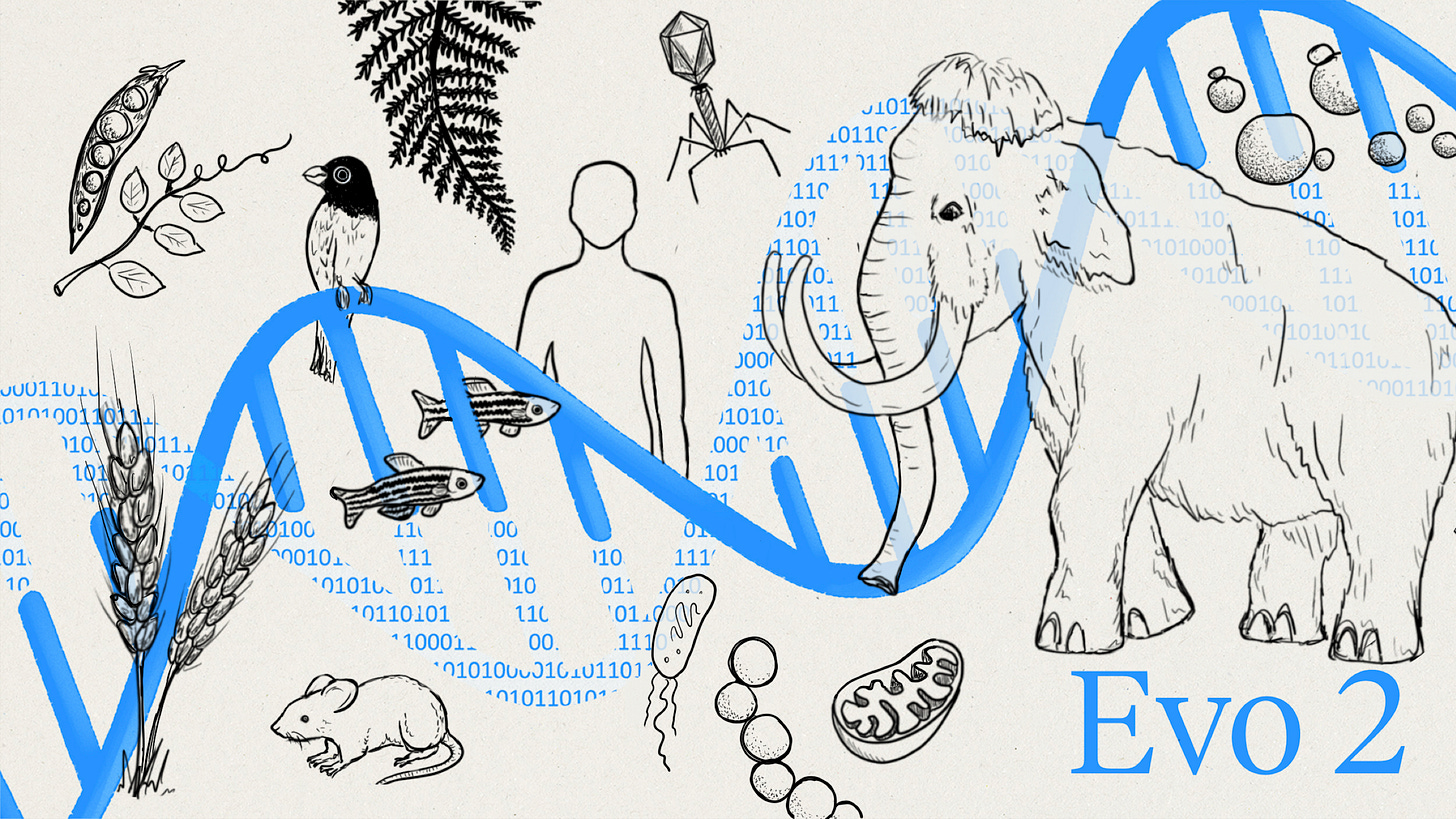
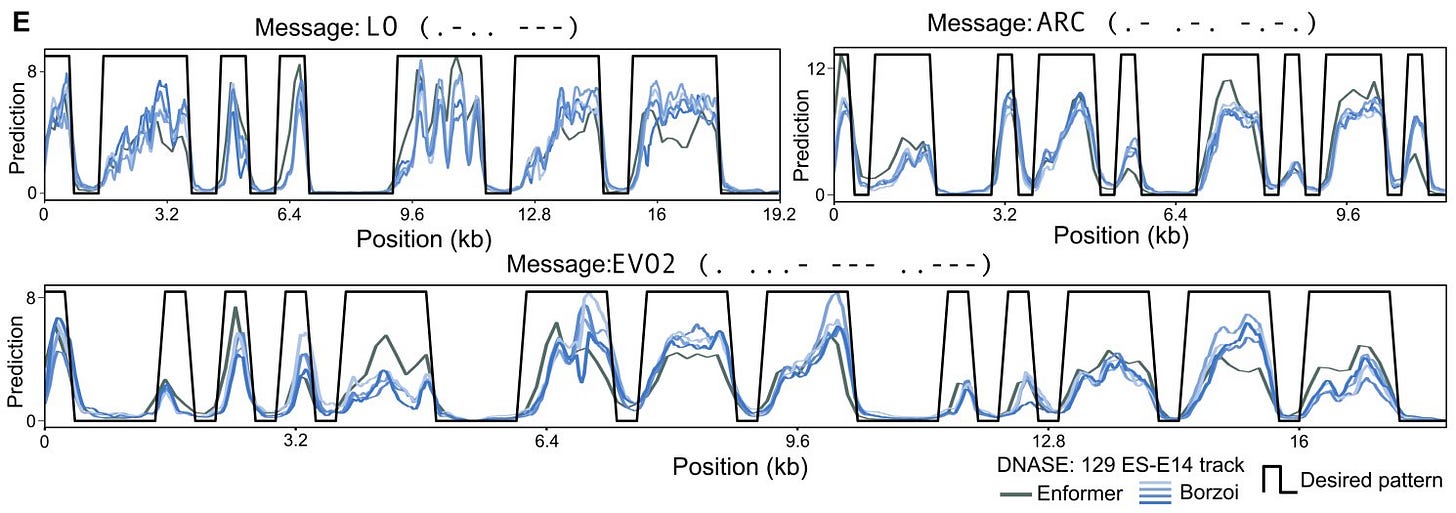
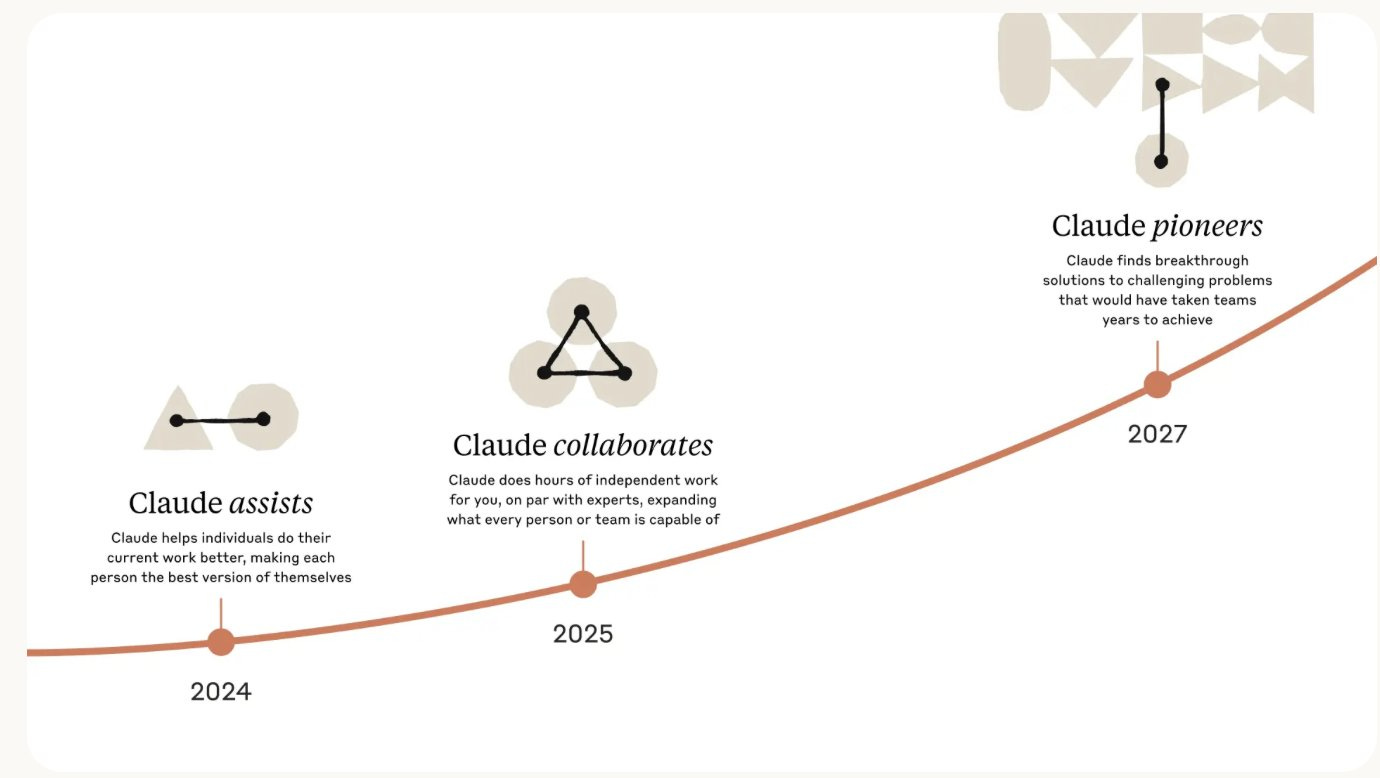
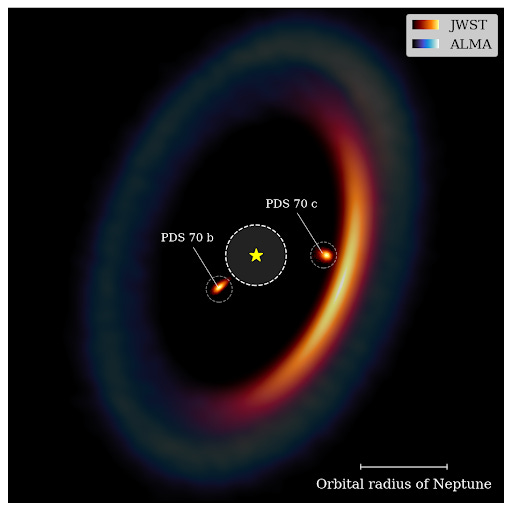

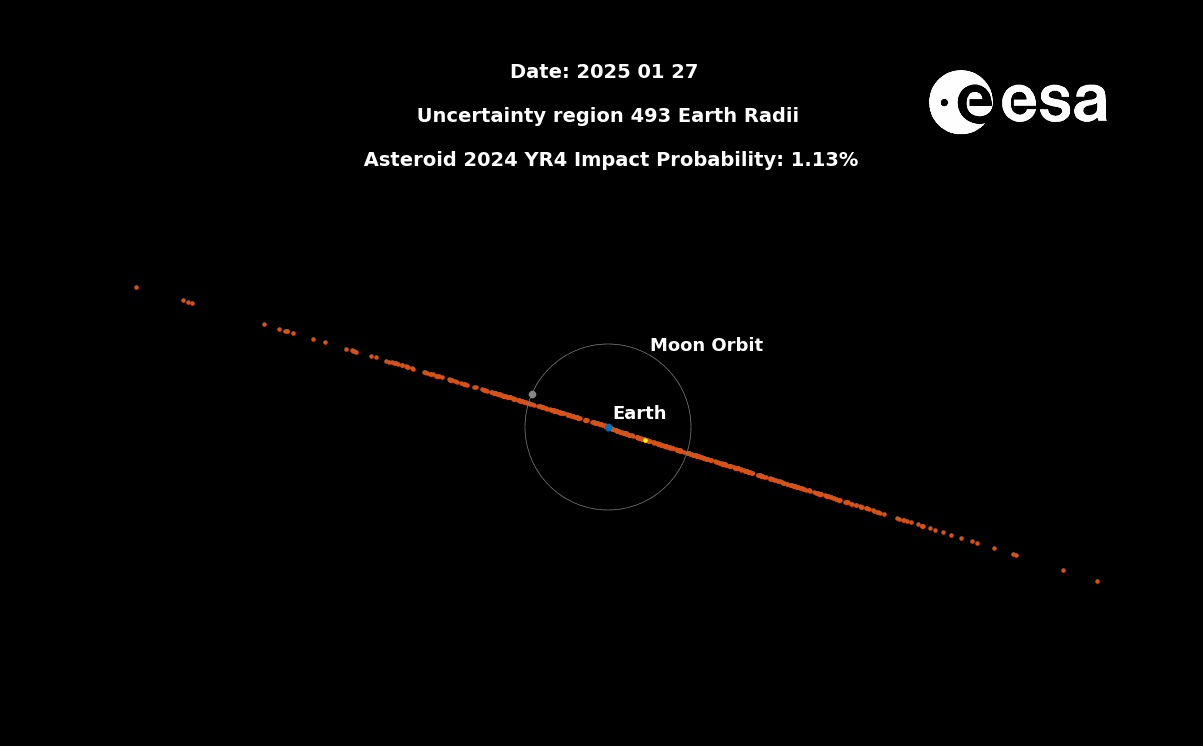
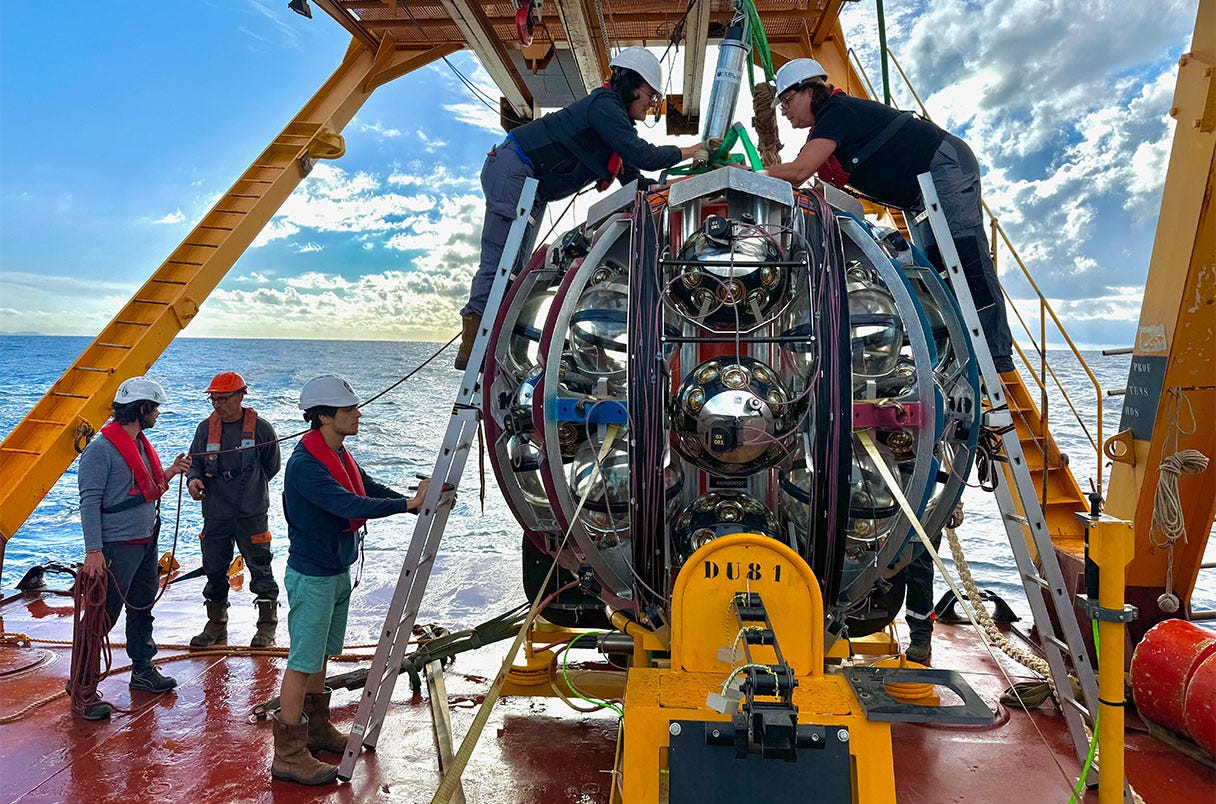
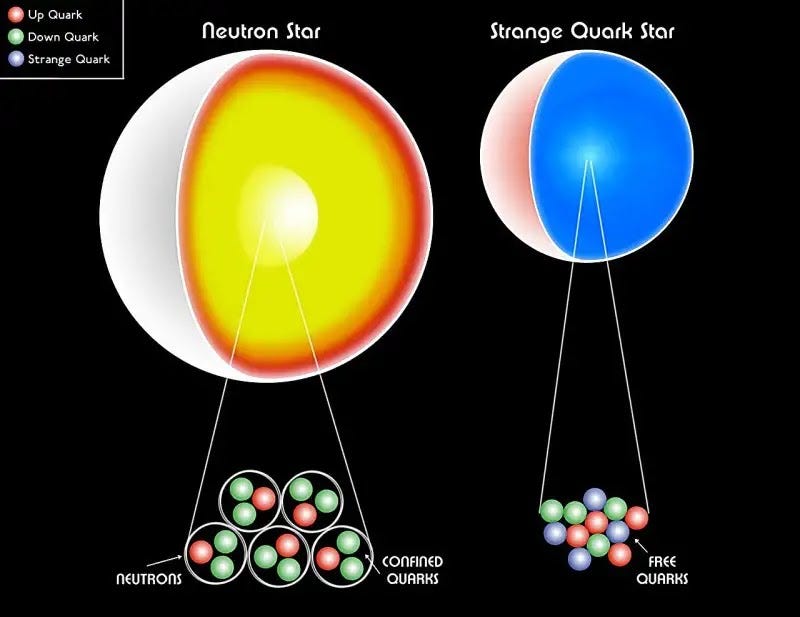

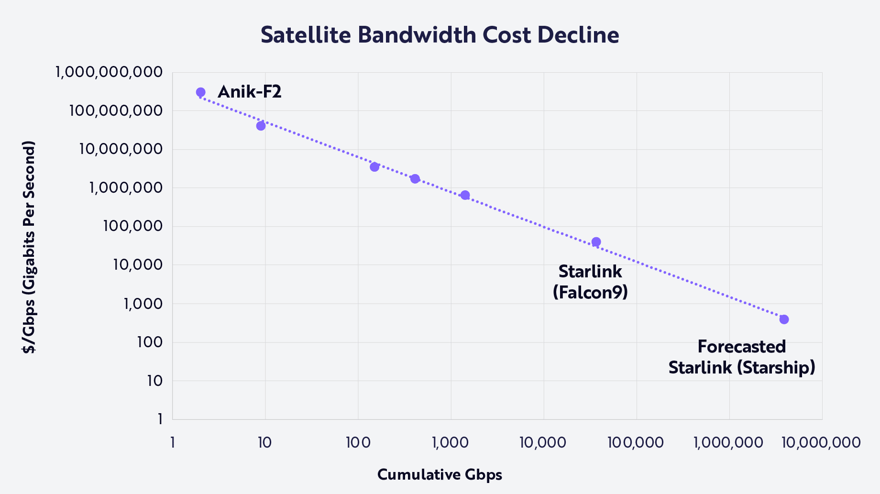
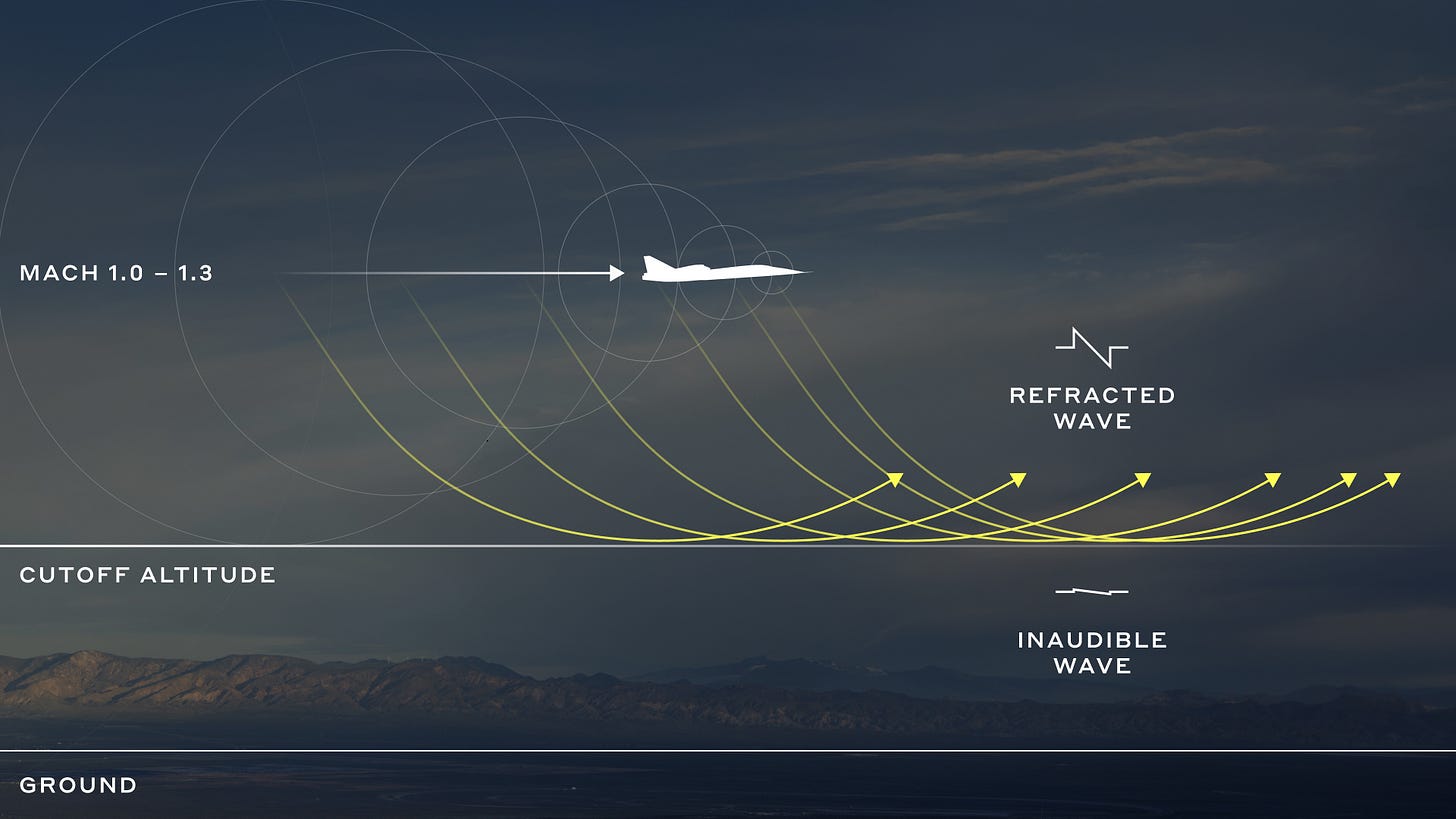
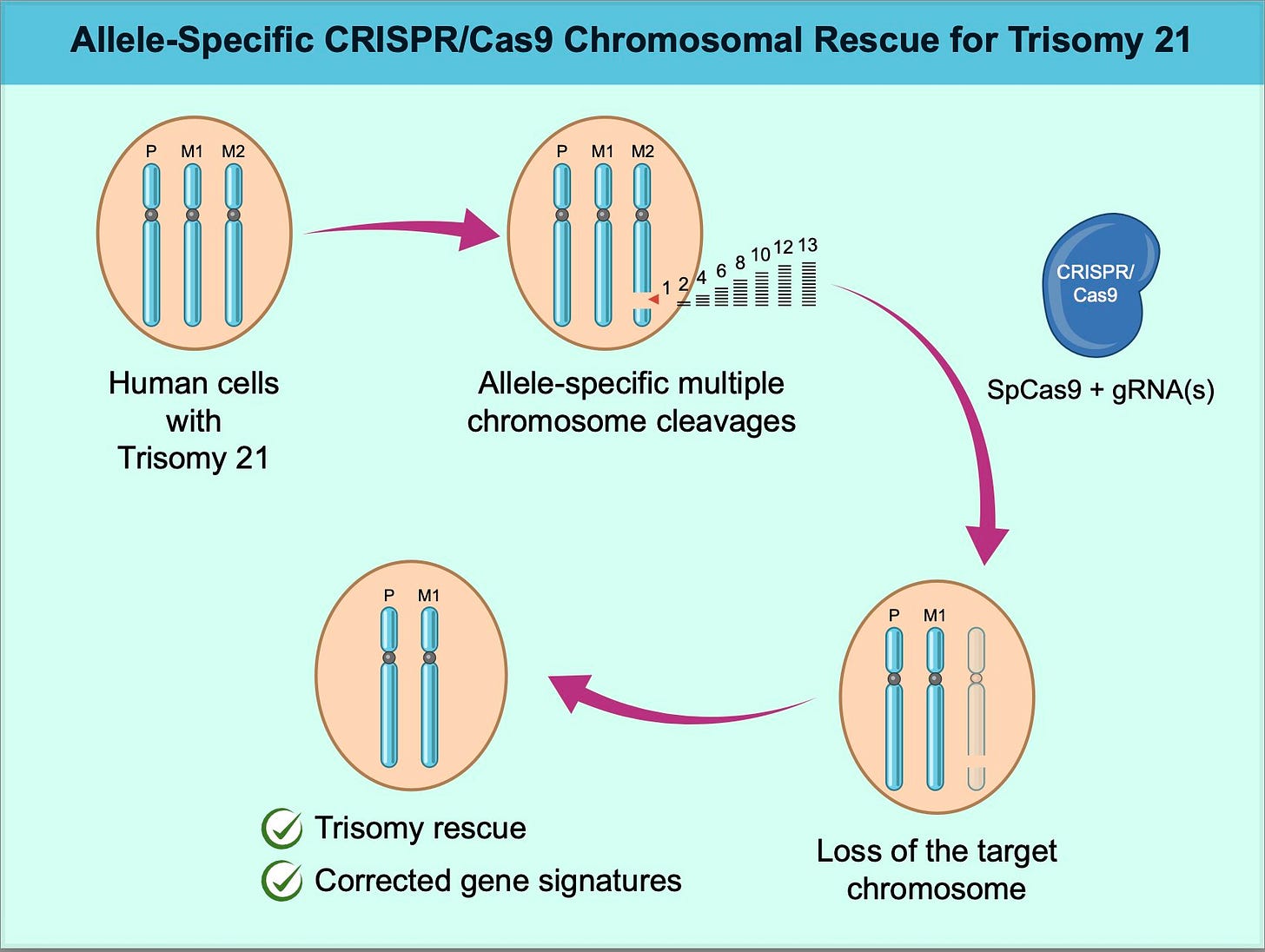
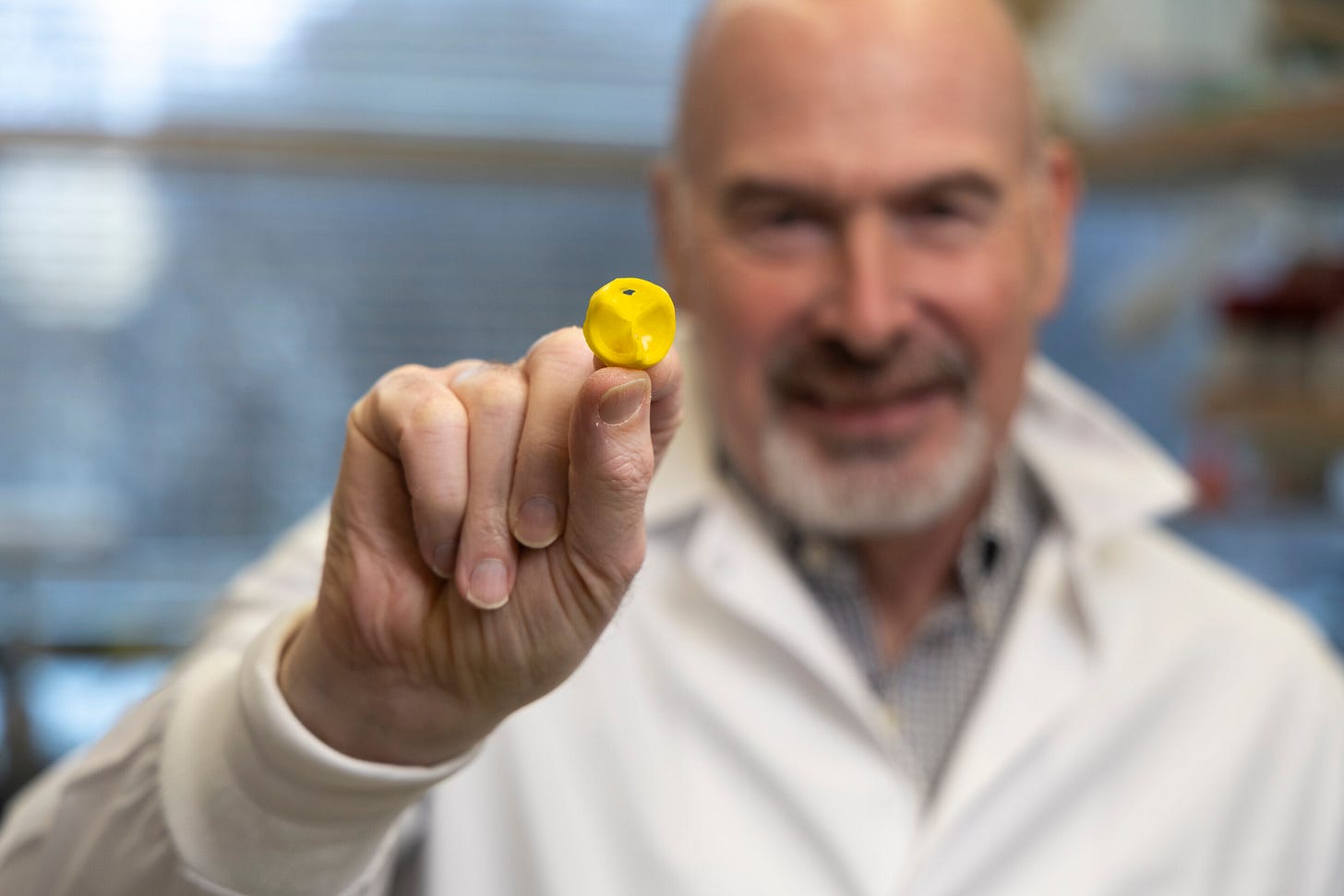


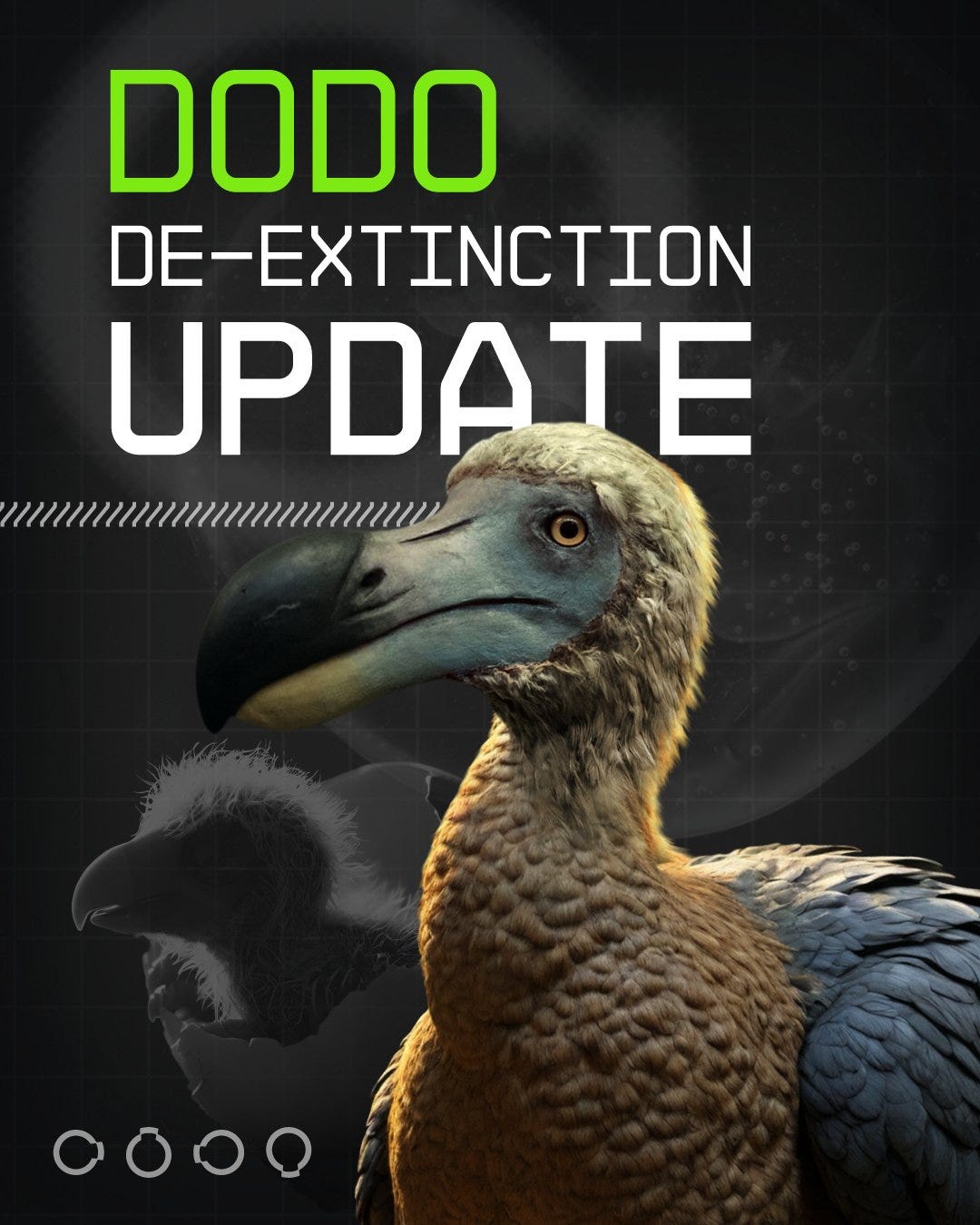


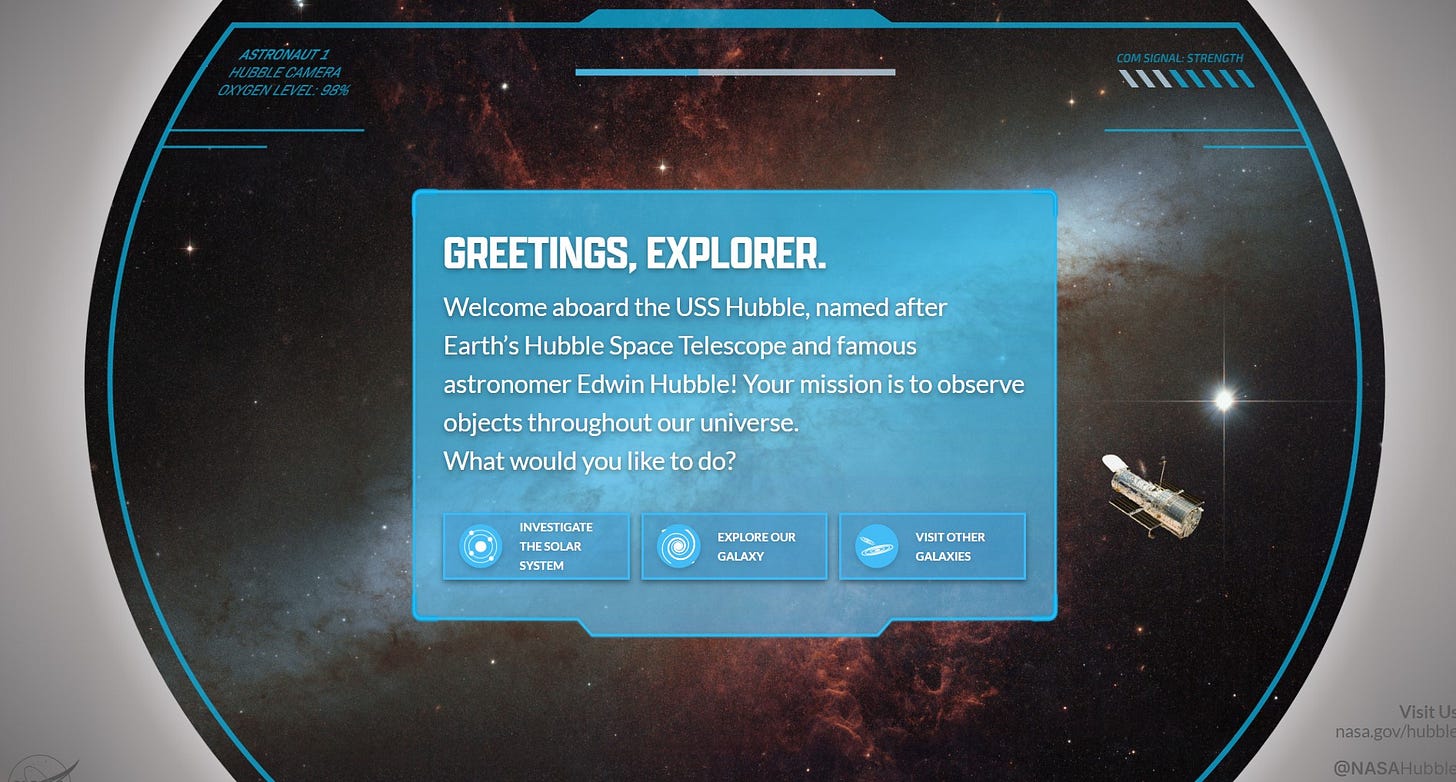
I love this substack good work
The second and third paragraphs are iterations of the same thoughts. One should be cut (the third seems weakest to me).